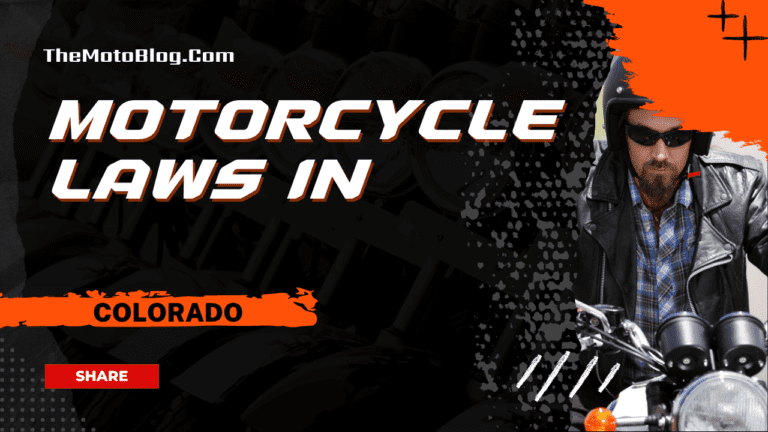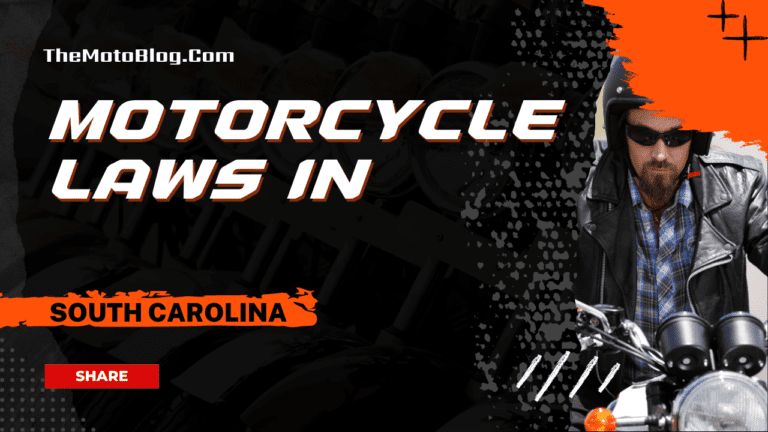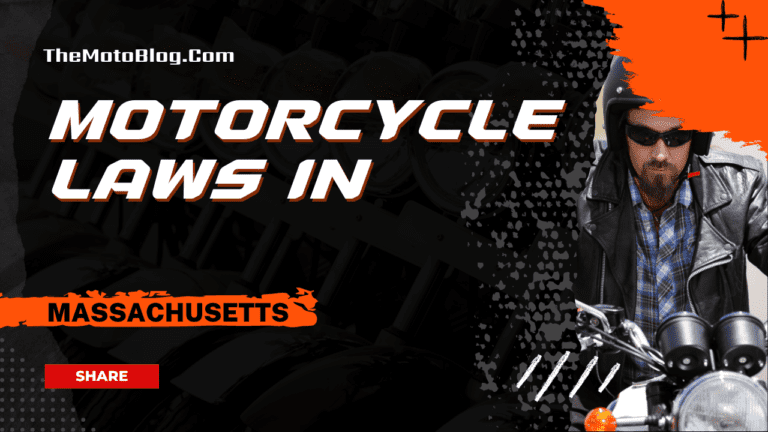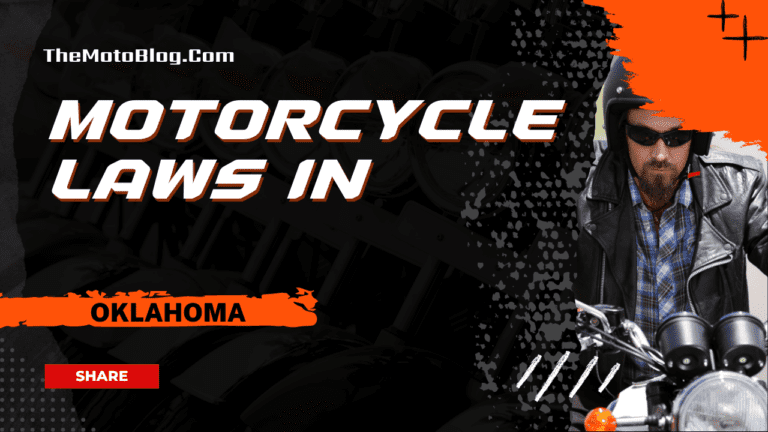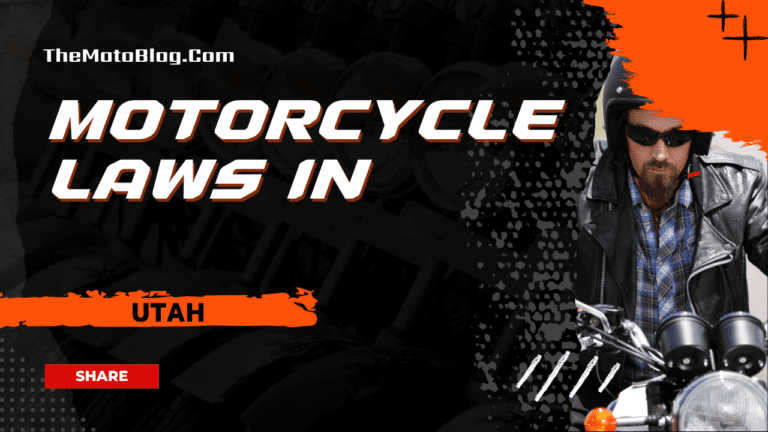Motorcycle Laws in Washington: Your Comprehensive Guide to Legal Riding
Navigating Washington’s motorcycle laws can be as thrilling as riding the open road on two wheels. I’ve spent countless hours studying these regulations, and I’m excited to share my knowledge with fellow riders. Whether you’re a seasoned biker or just considering buying your first motorcycle, it’s essential to understand the rules of the road in our beautiful state.
Safety is key when it comes to motorcycling, and Washington law takes this very seriously. Helmets are not only encouraged – they’re required by law for all riders, regardless of age or experience level.
Beyond helmets, there are also regulations around licensing, insurance requirements, and lane-splitting rules that can catch some riders off guard if they’re not prepared. There’s no room for ignorance when you’re on a bike – understanding and abiding by these laws isn’t just about avoiding fines, but ensuring your safety and those sharing the roads with you.
Key Takeaways
- Washington’s motorcycle laws place a strong emphasis on rider safety.
- Helmets are mandatory for all riders, regardless of age or experience level, and must meet U.S. Department of Transportation (DOT) standards.
- It is illegal to do lane splitting in Washington, which refers to riding between lanes or rows of slow-moving or stopped traffic.
- Motorcyclists in Washington are required to have liability insurance coverage.
- In the case of electric motorcycles, they are treated more like bicycles than motorbikes under Washington law and have a speed limit of 20 mph on level ground.
- Violating motorcycle laws can lead to hefty fines and points against your licenses, potential license suspension, and increased insurance rates.
- The penalties for not wearing a helmet, not having an endorsement, and speeding are $136, $386, and $124-$250 respectively.
- Insurance is emphasized in the motorcycle laws to protect riders from financial hardship in case of accidents.
- It is mandatory to adhere to specific motorcycle equipment regulations in Washington, including helmet usage, requirement of side mirrors and mufflers.
- Motorcycle endorsement is necessary, which entails passing the necessary tests and paying the required fees.
- In Washington, one must not ride under influence and always adhere to speed limits.
- Washington’s laws also cover a unique case of electric motorcycles, which are treated differently than traditional motorcycles.
In Washington, motorcycle laws are designed to enhance road safety, with regulations governing helmet usage, eye protection, and restrictions on lane splitting. The laws in Washington’s neighboring states have their unique characteristics, reflecting the diverse riding environments and road conditions. To the south, Oregon’s motorcycle laws focus on comprehensive rider education, while Idaho’s motorcycle laws emphasize requirements for carrying passengers. The situation differs in Montana, where the motorcycle laws include guidelines on handlebar height and sound restrictions. Since Washington shares a border with the Canadian province of British Columbia, riders should also be aware of potential differences in international motorcycle regulations. Understanding these variations in motorcycle laws in Washington and its neighboring jurisdictions is vital for riders planning cross-state journeys, ensuring legal compliance and overall safety on the roads.
Understanding the Basics of Motorcycle Laws in Washington
Motorcycle laws in Washington are just like any other state, designed to keep everyone safe on the road. They’re not just rules to follow – they’re a way of life if you’re a rider.
First and foremost, helmets are mandatory while riding motorcycles in Washington. It’s not simply a suggestion; it’s the law. And don’t think you can get away with just any helmet.
Next up is insurance requirements. Yes, you read that right – you’re required to have liability insurance coverage when operating a motorcycle in Washington.
Now onto licensing: obtaining your motorcycle endorsement isn’t as simple as passing a written test and hitting the open road. You’ll also need to complete an approved rider course or pass a skills test.
Lastly, let’s tackle lane splitting — it’s illegal in Washington. If you aren’t familiar with term “lane splitting”, it refers to riding your bike between lanes or rows of slow moving or stopped traffic moving in the same direction.
So these are some basic motorcycle laws every biker should know before hitting the roads of Washington:
Mandatory Helmet Use: A Closer Look
I’m diving right into one of the most talked-about topics amongst Washington bikers – mandatory helmet use. Now, here’s something you might not know: Washington is one of the 19 states that currently has a universal helmet law in place. This means every rider, regardless of age or experience, must wear a helmet while on public roads.
Let’s break down some key points under this law:
- Firstly and foremostly, helmets worn by riders have to meet safety standards set by the U.S. Department of Transportation (DOT). So it’s not enough just to put on any old hat; your headgear needs that DOT certification label.
- Secondly, this isn’t a guideline or suggestion — it’s enforced by law. Failure to comply can result in fines and penalties.
But why is this rule so stringent? Well, take a look at these figures:
| Year | Motorcycle Accidents | Fatalities | Percentage Wearing Helmets |
|---|---|---|---|
| 2015 | 2,449 | 76 | 91% |
| 2016 | 2,512 | 81 | 92% |
The data speaks for itself — helmets save lives. After all, they’re designed to protect one of your most vital organs: your brain! But beyond legal compliance and personal safety concerns lies another reason for wearing that helmet: health costs. Treatments linked with motorcycle-related injuries don’t come cheap.
It’s also worth noting that there are exceptions to Washington’s helmet law – like if you’re operating an off-road vehicle or participating in an officially sanctioned parade (but let’s be honest – those aren’t everyday circumstances).
Lane Splitting Legality in Washington
Navigating the streets on two wheels can be thrilling, but it’s also crucial to understand and respect the laws of the land. One such law that often sparks curiosity among riders is related to lane splitting. So, let’s delve into the specifics of this practice in Washington state.
First off, lane splitting, for those unfamiliar with the term, refers to when a motorcyclist drives between lanes of stopped or slower moving traffic or moves between vehicles in two different lines of traffic traveling in the same direction.
Now onto its legality in Washington. Currently, lane splitting isn’t legal in Washington state. Yes, you heard that right – it’s not allowed by law here! The Revised Code of Washington (RCW) 46.61.608 states quite clearly: “No person shall operate a motorcycle between lanes of traffic or between adjacent lines or rows of vehicles.”
Here are some other key points about motorcycle laws from RCW:
- Motorcycles must have at least one mirror (RCW 46.37.400).
- Riders under 18 must wear helmets approved by the Department of Transportation (RCW 46.37.530).
- It’s illegal to carry anything which prevents you from keeping both hands on handlebars (RCW 46.61.611).
| RCW Code | Law Description | |
|---|---|---|
| 1. | RCW 46.61.608 | Prohibits lane splitting |
| 2. | RCW 46.37 .400 | Requires at least one mirror |
| 3. | RCW 46 .37 .530 | Helmets mandatory for riders under age 18 |
| 4. | RCW 46 .61 .611 | Both hands required on handlebars |
While there has been some debate over these rules and occasional pushes for change, as it stands today, not abiding by them could lead you straight into trouble with local law enforcement.
So folks, while zipping through traffic might seem like an effective way to beat congestion and save time on your commute – remember that it’s against the law here in Washington! Always prioritize safety first and ensure your riding habits are within legal parameters.
Motorcycle Equipment Regulations
Diving right into the topic, it’s critical to understand that Washington has a number of specific motorcycle equipment regulations. These aren’t just guidelines, but actual laws designed to keep riders safe on the road.
Starting with helmets, in Washington, there’s no wiggle room – they are absolutely required. According to RCW 46.37.530, helmets must meet U.S Department of Transportation standards and be equipped with either a neck or chin strap.
Next up is eye protection which isn’t optional either. If your bike doesn’t have a windshield or screen, you’re required to wear goggles or glasses with safety lenses.
Let’s talk about lights for a moment. Your motorcycle must have at least one headlamp – but no more than two. Additionally, it’s mandatory for motorcycles to have tail lamps and stop lamps.
Here’s how this breaks down:
| Regulation | Required |
|---|---|
| Helmet | Yes |
| Eye Protection | Yes (if no windshield) |
| Headlamps | 1-2 |
| Tail Lamps | Yes |
| Stop Lamps | Yes |
Moving on to mirrors and mufflers: Washington law requires all motorcycles be equipped with left and right side mirrors. As for mufflers, they’re not optional – every bike needs one that’s in good working condition.
A few less obvious regulations include handlebar height restrictions (no higher than 30 inches above the seat), footrest requirements for passengers, and obligatory turn signals if your bike was manufactured after January 1st, 1955.
License Requirements for Motorcyclists
Let’s dive into the topic of motorcycle licensing requirements in Washington. If you’re keen to hit the road on two wheels, there are specific rules and regulations that must be followed.
First off, it’s crucial to understand that operating a motorcycle requires an endorsement on your existing Washington driver’s license. This isn’t merely a suggestion; it’s state law.
To get this endorsement, I found out that there are two paths to choose from:
- You can complete a state-approved motorcycle safety course.
- Or, if you’re 18 years or older, pass both a knowledge test and a riding skills test.
The first option is typically recommended for beginners since it provides comprehensive training.
Here is a breakdown of tests and fees involved in obtaining your endorsement:
| Test | Fee |
|---|---|
| Knowledge Test | $15 |
| Skills Test | $250 |
Also noteworthy is the fact that motorcycles have their own permit separate from standard driver permits. To acquire one of these babies, you’ll need to be at least 16 years old with parental consent if under 18, have proof of completion from an approved rider course or pass the knowledge test mentioned above.
As far as costs go:
- The application fee for this permit costs $15
- An additional cost of $5 applies every time you renew it
Traffic Rules Specific to Motorcycles
I’ve spent a great deal of time researching motorcycle laws in Washington, and it’s clear that there are some traffic rules that are specific to motorcycles. Let’s delve into them.
First off, helmets. In Washington, it’s a legal requirement for all motorcyclists to wear a helmet. And not just any helmet – it must meet the Department of Transportation (DOT) standards.
Another unique rule relates to lane splitting. Contrary to what many believe, lane splitting, which refers to riding between lanes or rows of slow moving or stopped traffic, is not permitted in Washington.
Now let’s talk about motorcycle equipment. Your bike must be equipped with at least one mirror on either side, and the handlebars should not position your hands higher than your shoulder height when you’re seated on the bike. Additionally, both rider and passenger need footrests.
Here’s a brief rundown:
| Requirement | Details |
|---|---|
| Helmet | DOT-approved |
| Lane Splitting | Not allowed |
| Mirrors | At least one required |
| Handlebar Height | No higher than shoulder level |
Motorcycle endorsement is another key aspect of Washington’s motorbike laws. You can’t ride without a valid motorcycle endorsement on your driver’s license – period.
Let me also mention the Passenger Rules: If you plan on having someone ride pillion, they will also need their own seat and footrests. Plus, if they’re under 5 years old or shorter than 40 inches tall, they won’t be able to ride along at all – for safety reasons of course!
In terms of insurance requirements: Yes! You gotta have insurance coverage if you’re operating a motorcycle in Washington State – no exceptions here.
Consequences of Violating Motorcycle Laws
I’ve observed that some riders in Washington treat motorcycle laws as suggestions, rather than rules. But I’m here to tell you, there’s no room for laxity when it comes to obeying these laws. Not only do they protect your safety, but ignoring them can lead to severe consequences.
Let’s talk penalties. If you’re caught without a helmet in Washington, the fine is $136. Riding without an endorsement? That’s another $386 out of your pocket. And let’s not forget about speeding tickets—those can range from $124 to a whopping $250, depending on how much over the limit you were going.
| Violation | Fine |
|---|---|
| No Helmet | $136 |
| No Endorsement | $386 |
| Speeding (depending on severity) | $124-$250 |
Now, those are just fines. The consequences extend beyond financial penalties. Think about points against your license too. Major infractions like reckless driving could add 5 points to your record; minor ones like speeding or running a red light add 3.
- Reckless Driving: 5 points
- Speeding/Running Red Light: 3 points
Those numbers tick up pretty quick and remember, if you accumulate too many within three years—say around 20 points—you could face license suspension in Washington State.
But it doesn’t stop there! Your insurance rates will likely increase after each violation, making every ride more expensive than the last one.
Role of Insurance in Washington’s Motorcycle Law
Let’s dive right into the role insurance plays in motorcycle laws in Washington. Did you know that unlike many states, Washington doesn’t explicitly require motorcyclists to carry insurance? That’s right! However, there’s a catch. In case of an accident where you’re found at fault, being uninsured can lead to serious financial consequences.
Remember this golden rule: if you’re caught riding without any proof of financial responsibility, expect hefty fines. You might be thinking now, “Well, I’m careful on the road.” But let me remind you that accidents aren’t always your fault.
Consider what would happen if an underinsured motorist hits you. Without proper coverage yourself, medical bills and repair costs could quickly become overwhelming. So it’s worth considering getting coverage even if it’s not mandated by law.
In terms of specifics about coverage levels for those who do choose to insure their bikes, here are some stats:
| Minimum Coverage Level | Cost |
|---|---|
| Bodily injury per person | $25k |
| Bodily injury per accident | $50k |
| Property damage | $10k |
Now let’s take a look at Uninsured/Underinsured Motorist (UM/UIM) coverage which helps cover your expenses if another party is at fault but lacks adequate insurance themselves:
- UM/UIM bodily injury: This covers medical expenses and lost wages.
- UM/UIM property damage: This takes care of repairs needed after such an incident.
Just remember – while purchasing motorcycle insurance isn’t technically required in Washington State law – riding without it carries risks far beyond simply breaking the bank due to unforeseen accidents or incidents.
The Unique Case of Electric Motorcycles
Washington’s motorcycle laws get a tad more intriguing when we talk about electric motorcycles. Unlike their conventional counterparts, electric motorcycles fall into a unique legal category.
They’re not exactly the same as traditional motorcycles under Washington law. In fact, they’re often treated more akin to bicycles than motorbikes. This unconventional placement comes from their eco-friendly nature and different operation mechanisms.
The speed limit for electric motorcycles is similar to that of bicycles, capped at 20 mph on level ground. It’s worth noting that these rules vary slightly depending on whether you’re on public roads or private property.
| Motorcycle Type | Speed Limit |
|---|---|
| Traditional Motorcycles | Speed limit according to road signs |
| Electric Motorcycles | 20 mph |
There are some additional regulations worth noting:
- Helmet use is mandatory while riding an electric motorcycle.
- You must have a driver’s license but it doesn’t necessarily need to be a motorcycle endorsement.
- Riders must yield the right-of-way to pedestrians and other vehicles in most cases.
While these rules might seem restrictive, they reflect Washington’s commitment towards safety and environmental sustainability. If you plan on hopping onto an electric motorcycle soon, make sure you’re well versed with these specific laws – they’ll keep both you and those around you safe!
Conclusion: Staying Safe and Legal on Washington Roads
Let’s wrap up our discussion on motorcycle laws in Washington. It’s clear that the state takes a very proactive approach to ensure the safety of motorcyclists.
One key takeaway is that helmets are not optional—they’re mandatory for all riders, regardless of age or experience level. Remember, your helmet must meet DOT standards. It’s not just about avoiding a fine—it’s about safeguarding your life.
Another thing I’d like you to remember is the importance of insurance. In case you find yourself involved in an accident, having adequate coverage can save you from potential financial hardship. The minimum liability insurance requirements in Washington are:
| Coverage | Minimum Requirement |
|---|---|
| Bodily Injury Liability | $25,000 per person/$50,000 per accident |
| Property Damage Liability | $10,000 |
You also need to be aware of lane splitting laws. While it might seem like a time-saver during traffic jams, lane splitting is illegal in Washington.
Lastly,
- Never ride under influence.
- Always adhere to speed limits.
- Get proper training before hitting the road.
Observing these rules won’t just keep you legal—it’ll help ensure that every ride is a safe one.
Remember—there’s nothing more important than your safety on the road. Stay informed and stay safe out there!
Motorcycle Laws in the US By States
If you liked this article, then please subscribe to our YouTube Channel for more Bike Videos. You can also find us on Instagram, Twitter and Facebook.
Disclosure: As an Amazon Associate, I earn from qualifying purchases. Read more about Amazon Affiliate Disclaimer.

Vishwanath Mathpati
I am Vishwanath Mathpati, a full-time Blogger and Motorcyclist from Bidar, Karnataka. I love writing about my Motorcycles Stories and Riding Gears on this blog.
Know More About Me.


